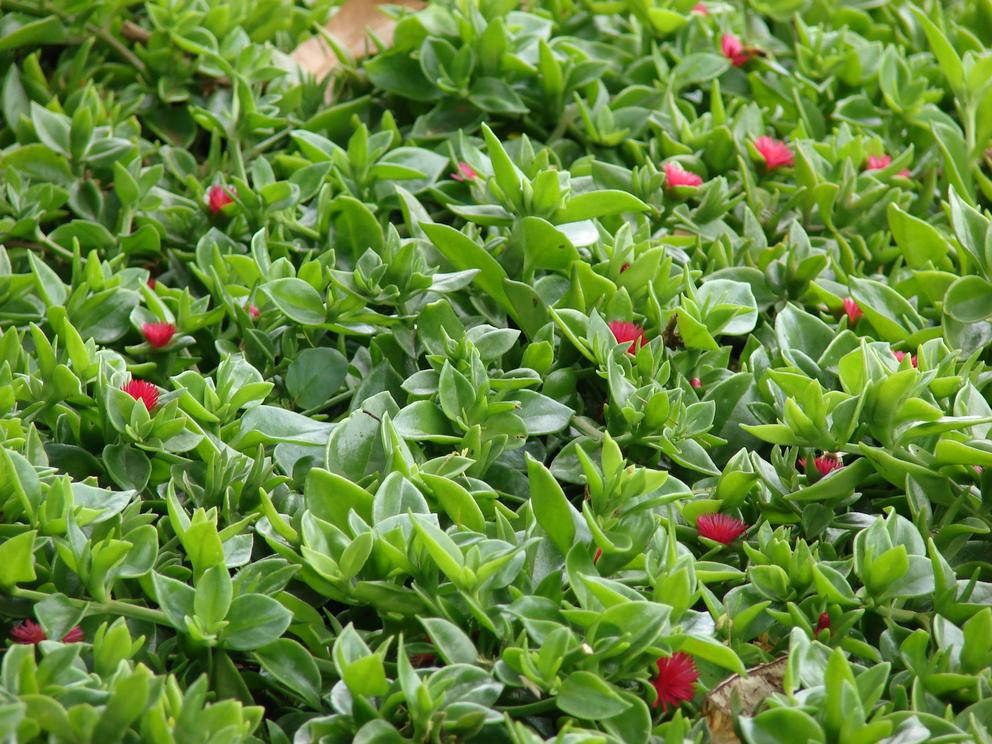Companion plants as ground cover
This article started out with me asking Bob what would be a good ground cover around your plants that was perhaps also useful in the kitchen. This naturally brought up the topic of Companion plants. Those that are either
– Good to plant together OR
– Bad to plant next to each other
In nature, plants grow in what appears to be a random mixture of plants that are in fact the result of natural selection of plants that are good to live together in that particular area. If they are not compatible then the odd one out will not survive. This will naturally happen in your garden as well. Inadvertently you may plant things together that work well or simply won’t thrive because of other plants they are grown near.
The traditional farming methods of growing in man-made straight lines is now being replaced in many instance with gardeners trying to mimic nature by designing gardens with a harmonious blend of plants that work well together either to help each other thrive, reduce pests infestations or even act a decoys to attract pests to keep them off other plants.
By growing a lot of different types of plants together you are using what small space you have to the best advantage for growing the maximum amount of produce in that space. And if done with a little knowledge you also reduce your pest problems.
The inter-planting of specific herbs between other plants allows you to pick a few leaves of an herb while harvesting the main crop or perhaps cutting flowers for decoration on the kitchen table, all from the one small plot.
One example of mixed planting could be to grow Tomatoes with some Basil & some annual plants like Cosmos for their flowers. The Basil will reduce aphids, mosquitoes & whitefly from the Tomatoes while the Cosmos attract bees to help increase the fruit rate of the tomatoes.
What better combination for a great pasta dish with a little table decoration as well. Cosmos also attracts aphids and is often used as a decoy plant to keep aphids off other plants.
Or marigolds are great to plant around tomatoes to reduce nematode damage. And bergamot will enhance the growth of tomatoes while attracting bees to the area, which in turn will help pollinate corn plants if you plant them near the bergamot.
The actual mix of companion plants will be determined by
– time of year
– climate
– the produce plants used
– compatible herbs/flowering plants
– quantity of plants needed to make a difference
You need to make your own mixture based on local information, but be aware that many people do not notice any discernible difference as results can vary according to the many different factors that affect each combination of plants.
There are some incompatible plants that should NOT be grown together such as Basil and Rue, or garlic and onions near beans or peas. Why you may ask? No one really knows for sure why basil and Rue are incompatible together. They just don’t thrive side by side.
Beans are said to enrich the soil by fixing nitrogen (it is actually the Rhizobia that fix the nitrogen) which in turn makes onion and garlic grow green because they love nitrogen. But onions and garlic will not produce good bulbs with too much nitrogen even though they love nitrogen.
Yet another use of companion plants is to use them in a compost heap to aid the breakdown of the waste material.
Dandelions are a weed in the lawn but are great for your compost heap. It is best to dig them up before they seed so they don’t propagate. The dandelions are rich in iron, copper, potassium, sulphur & manganese which add to the value of the compost. Many people these days consider dandelions a nutritional treat to add to a green smoothie or salad and are therefore not considered a weed. But I know in my yard there are way too many to eat.
Another brilliant plant that makes a beautiful fill-in plant around your ornamental plants is Comfrey. It’s great to eat, great in your garden and great for the compost heap as well.
The bottom line ….By covering ALL exposed soil in your garden you shade out the opportunity for most of the weeds to germinate because they can’t do it without sunlight. If they do germinate they will be weak from being shaded and easy to pull out before they set seed. Do some research to find out the best ground cover for your garden whether it be herbs or grasses. Herbs for cooking, flowers for the table or grass for the compost heap.
I love clover because it’s easy to mow over, feeds the bees, doesn’t grow too tall, is great as green fodder for your garden soil or grazing animals, and is actually edible when boiled.
Plus it is beautiful to walk on or “roll over in the clover”.
Today’s Did You Know…?
Cherry Tomatoes are a different group of tomato varieties (no specific species is given as a lot of tomatoes grown are a hybrid mixture of varieties) Cherry Tomatoes are usually hybrids but within Var. cerasiforme.
There are two types of Tomatoes:
(A) Determinate (these produce flowers at the end of each shoot, so fruit all at once & are squat plants.
(B) Indeterminate (these set flowers & fruit and then keep growing (some even up to 3 m high if well supported)
Big tomatoes produce fruit 10 – 14 weeks after planting while cherry tomatoes will fruit 11-13 weeks later.
A common “disease” is Blossom End Rot. It is NOT a disease but a calcium deficiency so can be prevented by using a handful of lime per plant, 2 months before planting, so the plant has enough time to take up the calcium early to prevent the “disease”

